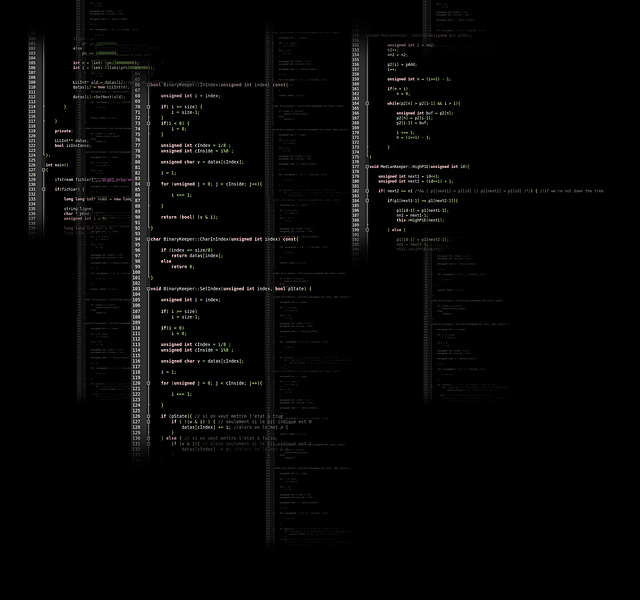Binance vs Coinbase vs Kraken Fees in 2025: An In-Depth Comparison
Author: Jameson Richman Expert
Published On: 2025-09-11
Prepared by Jameson Richman and our team of experts with over a decade of experience in cryptocurrency and digital asset analysis. Learn more about us.
When evaluating cryptocurrency exchanges in 2025, one of the most influential factors impacting your trading profitability is the fee structure. As the crypto ecosystem matures, exchanges continually optimize their fee models to attract both retail and institutional traders. Understanding the nuances of these fees—beyond just the headline trading costs—is crucial for making informed investment decisions. Over years of navigating these platforms, I’ve learned that an in-depth analysis of trading fees, withdrawal costs, hidden charges, and additional service fees can significantly influence your overall trading success. This comprehensive comparison will help you grasp the latest fee dynamics on Binance, Coinbase, and Kraken, equipping you with the insights to choose the platform that best aligns with your trading style, asset preferences, and long-term financial goals.

Understanding the Fee Structures: Core Components and How They Differ
Crypto exchanges employ varied fee models tailored to different user segments and trading volumes. Typically, these include:
- Trading Fees: Charged per buy/sell transaction, often structured with maker/taker fees. Maker fees apply when adding liquidity to the order book, while taker fees are for executing against existing orders. These fees can be static or tiered based on trading volume, and often incentivize high-frequency trading or liquidity provision. Notably, some platforms introduce dynamic fee adjustments based on real-time market conditions, further impacting costs during periods of high volatility.
- Withdrawal Fees: Costs incurred when transferring assets out of the platform, which can vary widely depending on the cryptocurrency, network congestion, and withdrawal method. Many platforms implement fixed or percentage-based withdrawal fees, with some offering discounted rates for large-volume traders or institutional clients. Additionally, network fees (blockchain transaction costs) are passed directly to the user, which tend to fluctuate with network usage and can increase significantly during peak congestion.
- Deposit Fees: While most platforms waive fiat deposit fees via popular methods like ACH or bank transfer, certain methods such as wire transfers or third-party processors may incur charges. Crypto deposits are generally free, but users should be aware of network transaction fees, especially for tokens with high on-chain activity or during periods of congestion.
- Additional Costs: Premium services such as margin trading, staking, lending, API access, subscription-based features, and advanced order types (e.g., OCO, trailing stops) can carry extra charges or require monthly subscriptions. These features are often bundled into tiered plans and can significantly impact active traders' overall expense, especially if leveraged trading or automated strategies are employed.
In 2025, each platform continues to refine these components to attract a diverse user base while maintaining security and compliance standards. Let’s explore how Binance, Coinbase, and Kraken have evolved their fee models, including recent innovations, incentive programs, and cost-saving features.
Binance: Leading with Low Fees and Tiered Incentives
Binance remains a dominant player by offering some of the lowest trading fees globally, combined with a sophisticated tiered fee model that strongly incentivizes high-volume traders and market makers:
- Standard Trading Fee: The base fee is just 0.1% per trade, making it highly competitive for retail traders. For spot trading, this fee applies to both maker and taker orders, with slight variations based on volume and user type.
- BNB Discount & Fee Reduction Tiers: Paying trading fees with Binance Coin (BNB) grants a 25% discount, reducing the effective fee to about 0.075%. High-volume traders benefit from further reductions, as Binance offers tiered fee discounts based on 30-day trading volume thresholds. Top-tier traders can enjoy maker/taker fees as low as 0.02%, rewarding liquidity provision and frequent trading activities.
- Institutional & API Trading Incentives: Binance provides fee rebates for API-driven trading, futures, and institutional clients—often with near-zero fees on derivatives contracts, making it especially attractive for professional traders and hedge funds. These incentives encourage high-frequency, algorithmic, and arbitrage strategies.
- Withdrawal Fees & Network Congestion: Binance dynamically adjusts withdrawal fees based on network conditions. For Bitcoin, typical withdrawal fees hover around 0.0005 BTC but can spike during congestion. Binance offers detailed fee charts and tools to estimate costs for over 600 cryptocurrencies, allowing traders to plan accordingly.
Additionally, Binance’s ecosystem includes trading competitions, referral programs, and volume-based rebates, which further reduce effective trading costs for active users. The platform continually innovates with fee discounts for staking, savings, and new product launches, creating a comprehensive low-cost trading environment. For registration and latest fee updates, visit Binance Registration.
Coinbase: Simplicity with Higher Costs
Coinbase’s core appeal lies in its transparency, user-friendliness, and regulatory compliance—values that attract beginners and casual investors. These strengths come with higher explicit costs, especially for small trades or fiat on/off ramps:
- Spread & Transaction Fees: Coinbase applies an approximate 0.5% spread on buy and sell transactions, which is added on top of the market price. In addition, transaction fees vary based on payment method, region, and transaction size. For example, credit and debit card payments can incur fees up to 3.99%, significantly increasing costs for frequent trading.
- Payment Method Impact: ACH bank transfers tend to be cheaper (~1.49%) and slower, whereas card payments are faster but costlier, affecting cost-efficiency depending on trading cadence and urgency.
- Pro & Tiered Fees: Coinbase Pro offers a more competitive tiered fee structure starting at 0.04% for both maker and taker orders, decreasing as trading volumes increase. However, regular Coinbase accounts rely on higher spreads and fixed fees, making them less optimal for active traders but suitable for passive investors or those prioritizing security and ease of use.
Despite these higher costs, Coinbase’s strong security measures—including insured custodial wallets, biometric login, and rigorous compliance—make it a secure choice for newcomers. For users seeking lower fees, platforms like MEXC and Bitget offer competitive fee structures, broader asset options, and innovative features tailored for various trading strategies.

Kraken: Balanced Fees with Advanced Trading Tools
Kraken strikes a compelling balance between affordability, security, and advanced features, making it suitable for both retail investors and professional traders:
- Trading Fees & Tiered Discounts: Starting at 0.16% for makers and 0.26% for takers, Kraken’s fee structure is straightforward. As traders increase their 30-day trading volume, they can qualify for discounts, with top-tier traders paying as little as 0.00% for makers and 0.10% for takers, encouraging liquidity provision.
- Withdrawal & Asset Fees: Withdrawal costs depend on the asset. Bitcoin withdrawals are approximately 0.0005 BTC, with lower fees for stablecoins and fiat withdrawals via wire transfer—often negotiated for institutional clients. Kraken also supports a wide array of tokens, enabling diversified portfolios with minimal on-chain costs.
- Advanced Features & Incentives: Kraken offers margin trading, futures, staking, OTC services, dark pool trading, and API integrations. Fee discounts are available for API traders, high-volume participants, and those leveraging staking or margin products, making it a versatile platform for sophisticated strategies.
Kraken’s commitment to transparency, rigorous security protocols, and adherence to regulatory standards bolster its reputation among institutional investors. Its tiered fee system, combined with diverse asset support, makes it well-suited for traders seeking advanced tools without prohibitive costs. Exploring platforms like Bybit can further enhance access to competitive liquidity conditions and fee arrangements.
Beyond Fees: Other Critical Factors in 2025
While fee structures are fundamental, a comprehensive assessment of an exchange’s suitability should include:
- Security: Multi-layered security, including 2FA, biometric login, cold storage, regular security audits, and insurance policies against breaches, are essential to protect assets.
- User Experience: Intuitive UI, responsive mobile applications, customizable dashboards, and prompt customer support contribute to efficient trading and better risk management.
- Liquidity & Trading Volume: High liquidity minimizes slippage, ensures fair prices, and facilitates large trades. Monitoring daily volumes, depth of order books, and bid-ask spreads provides insights into platform health and reliability.
- Asset Variety & Advanced Features: A broad selection of cryptocurrencies, staking, lending, derivatives, and advanced order types (e.g., stop-loss, OCO, trailing stops) support diversified strategies and risk mitigation.
- Regulatory Compliance & Insurance: Platforms adhering to local regulations and offering security guarantees or insurance protect against legal and operational risks, providing peace of mind amidst a complex regulatory landscape.
In 2025, exchanges are doubling down on these areas—improving security, expanding asset offerings, and lowering fees—to stay competitive. A holistic approach that balances costs with security, usability, and liquidity ensures sustainable trading success aligned with your long-term financial ambitions.
My Personal Insights and Lessons from the Crypto Journey
Having traded across multiple platforms over the years, I’ve learned that focusing solely on fee structures can be shortsighted. Early in my journey, I chased the lowest fees but encountered issues like withdrawal delays, limited support, and security concerns. Over time, I realized that reliability, transparency, and security often outweigh marginal fee differences. For new traders, platforms like Binance or Kraken provide a good balance of affordability and safety. As experience grows, exploring niche platforms such as Bybit or Bitget can unlock advanced trading tools, referral incentives, and competitive fee discounts. The key to sustained success is adopting a comprehensive strategy—evaluating platform security, ease of use, available assets, customer support, and fee transparency—rather than chasing the lowest costs alone.

Final Recommendations for 2025: Choosing the Right Exchange
Ultimately, selecting among Binance, Coinbase, Kraken, or emerging exchanges depends on your trading volume, asset preferences, security priorities, and user comfort. Binance’s low fees and broad asset universe suit high-volume and institutional traders. Coinbase’s emphasis on transparency, fiat integration, and ease of use makes it ideal for beginners, despite higher costs. Kraken offers a balanced mix of competitive fees, advanced tools, and robust security for more experienced traders. Always perform small transactions initially to assess platform stability, customer support quality, and security measures before scaling investments.
To diversify your options, consider platforms like MEXC, Bitget, or Bybit for highly competitive pricing, innovative trading tools, and referral benefits. Conduct thorough research, compare fee structures, and start with small-scale trades to evaluate each platform’s performance and support. A strategic, ongoing evaluation process ensures you remain aligned with your trading goals and adapt to evolving market conditions in 2025 and beyond.